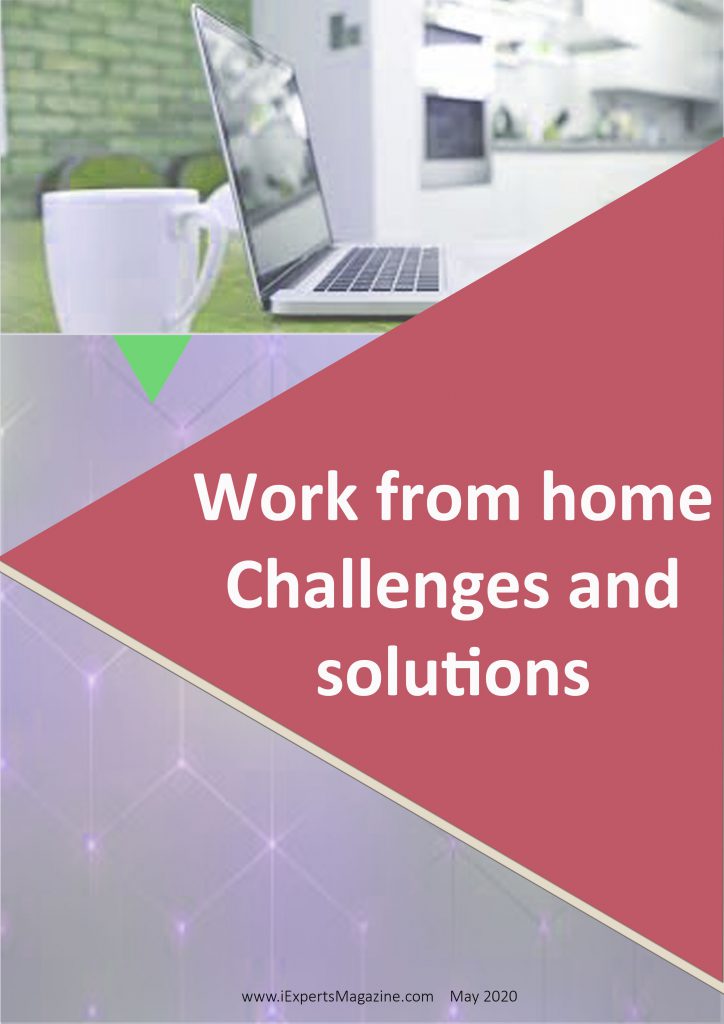
Work from home Challenges and solutions

The last few months have seen many challenges for the world across many aspects of life, one of which being working from home. This brings about challenges for people on both a personal and business level.
In the UK for example, many find their commute both a time in which they can reflect and transition between their home life and work commitments. This separation is important for a great number of people and losing this has brought about anxiety; meaning one has to adapt to the new single place being used for both work and home. What people forget to do is proactively think about how to recreate the time they would normally have and fall into a trap of working many more hours at home than they would have done in the office. A bit of planning is a good solution to this problem, find an ‘office’ space at home where work can be separated and keep work in there. Take a walk around the block or garden to refocus the mind and be ready for work at your start time and again at the time you would normally leave work to travel home. Have a lunch break, workout, and talk to friends to ensure the structure of each day is similar to what you are used to.
Following on from the personal challenges, the lack of support for employees to work from home can add further stress. Some organizations have found the requirement of the whole workforce remotely working something they never considered and found that a lack of planning, equipment, and processes almost crippling.
Linked to this is the security issues that present themselves with working from home that would not be there in the office, and recent personal experience in contacting a medical organization showed this. The receptionist was asking for personal details and medical information to be sent to her home BT internet email address, which with the levels of security an email account of this nature is configured with, is a huge risk. Clients of this organization would expect them to have business-ready applications that provide a minimum amount of encryption or security, and data loss prevention policies that enable the secure transfer of data whether the staff is in the office or not.
Looking at solutions to help with these situations is difficult after the fact, but there are a few things you can do to temperature check the set up you have now.
Irrespective of the size of your infrastructure and user base, some of the following points are quick ways to work out how agile your business is and whether it is ready to adapt to the unforeseen:
Capacity planning
- Do you have adequate hardware for employees?
- Do these employees have internet connections?
- If you use on premise infrastructure, what capacity does the VPN have from a network perspective? And where applicable, do you have enough licenses for your VPN users?
- Have hybrid/cloud solutions been considered to enable dynamic scaling?
Security
- Is there a patching solution in place for hardware taken off-site?
- How resilient in the anti-virus/anti-malware infrastructure for definition updates?
- Has a Data Loss Prevention (DLP) solution been addressed or activated to ensure that employees don’t accidentally (or deliberately!) leak company data given the ‘acceptable’ use of personal equipment for business purposes?
- How are service desk requests fielded?
- Can devices be managed off VPN?
Administrative
- When’s the last time the Acceptable Use Policy for the company was updated?
- Is BYOD in there?
- How reasonable is it for the business to expect people to mandate security controls on personal devices?
- Do people have a knowledge around which systems are acceptable for business meetings? I.e. Zoom may be used by people, but the business may prefer and endorse the use of WebEx or vice versa. There may be a licensing implication to consider.
- Does the company provide the correct software for the users to act on behalf of the business for other tasks, do you have correctly licensed software with adequate levels of security and encryption?
By Genine Johnson, Infrastructure Security Consultant
Arrington, Cambridgeshire, UK

